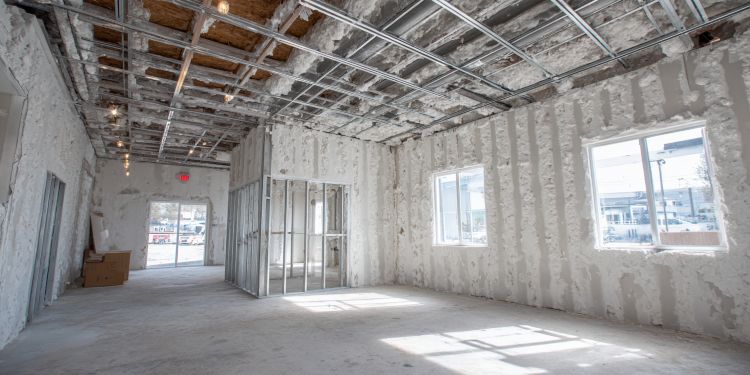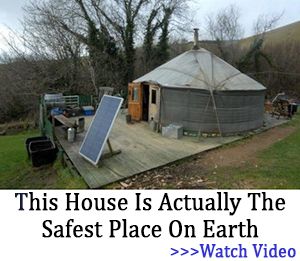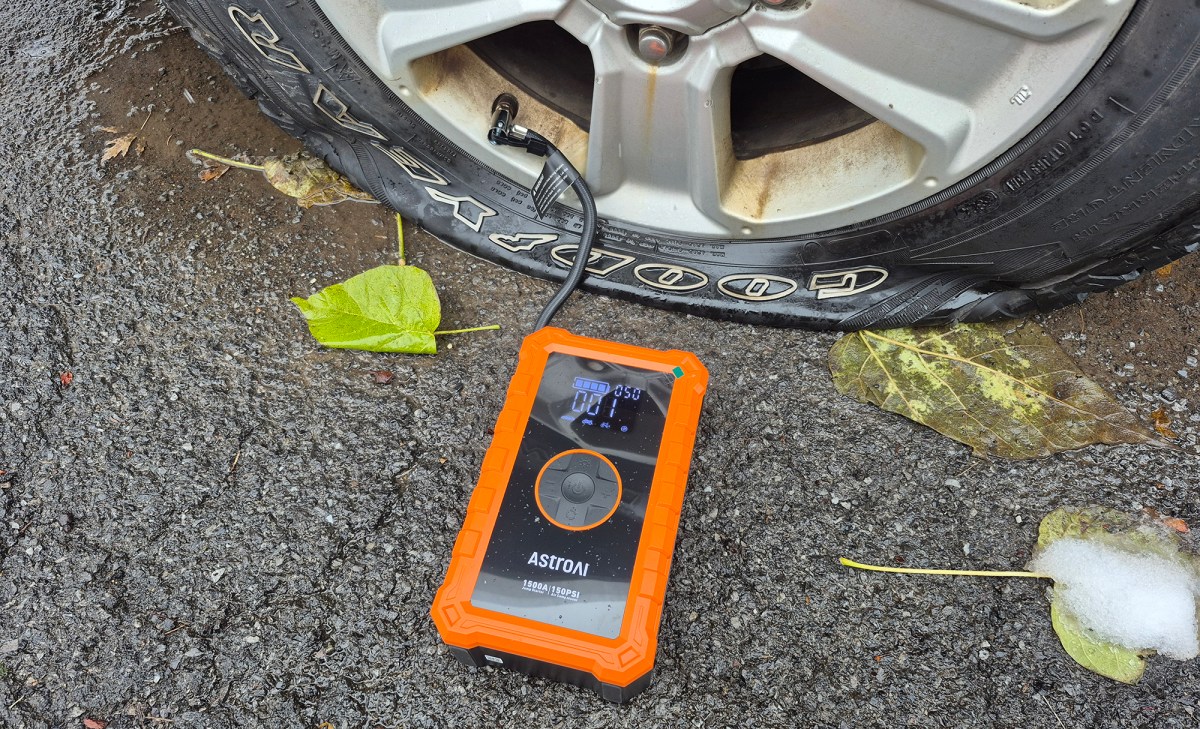Bulletproof Drywall Exists. Here’s Why You’ll Never See It in Stores!

The Myth of “Safe Walls”
If you think your home’s walls could protect you in a crisis, think again.
Standard drywall — the stuff that makes up 90% of American homes — is basically compressed paper dust. It can’t stop a bullet, a break-in, or even a good hammer swing. Yet we live behind it, convinced we’re “safe” because someone told us so.
But here’s the thing nobody mentions: bulletproof drywall does exist. It’s real, it’s been tested, and it’s already being used — just not by people like us. The elite, the powerful, and the politically connected all have access to advanced wall systems that can absorb high-velocity impacts and shrug off small arms fire. You don’t. And that’s no accident.
Your house wasn’t built to protect you — it was built to meet code, to be cheap, and to keep you dependent. That’s how the system stays in control. It keeps real resilience locked behind price tags and policy, while convincing the average family that their home is “secure.” The truth? It’s only secure until the first bullet, riot, or blackout hits your neighborhood.
What “Bulletproof” Really Means
There are wall systems made from ballistic fiberglass panels, Kevlar composites, and reinforced resin cores that can stop everything from a 9mm round to an AR-15 hit. They’re designed to absorb and disperse the energy of impact — the same tech used in military checkpoints and embassy walls.
Most people don’t realize that ballistic protection isn’t magic — it’s physics. These materials slow, spread, and catch a projectile before it can penetrate. That means a wall doesn’t need to be steel-thick to work; it needs to be layered right. But since that knowledge could empower homeowners to build genuine protection, it’s quietly left out of mainstream construction.
Think about it: the technology exists, but the narrative doesn’t. Your average builder has no clue, and your insurance company doesn’t want to know. They’d rather you pay for “home security systems” that alert the police after the danger, not fortifications that prevent it. They sell fear, not freedom.
And while the middle class keeps patching holes with gypsum and trust, government buildings and corporate bunkers use the real stuff — composite panels with hidden reinforcements and redundant layers. When chaos hits, they’ll be sealed tight. You’ll be left behind drywall that might as well be cardboard.
Why You’ll Never See It in Stores
Here’s the quiet truth: real ballistic drywall is restricted by cost, regulation, and intent. It’s marketed under industrial contracts, not consumer ones. A single 4×8 panel can run hundreds of dollars, and it’s often sold directly to government buyers or private security firms — not homeowners.
And when civilians do try to buy it, they’re buried under “special order” procedures, export restrictions, or background checks that have nothing to do with safety and everything to do with control. You’re told it’s a “liability issue” — but it’s really about dependency. They don’t want you building what they can’t monitor.
Look closely, and you’ll see the pattern. Bullet-resistant materials are always “for official use only,” “not recommended for residential installation,” or “must be installed by certified contractors.” Why? Because an informed, self-reliant citizen is unpredictable. They can’t be easily scared, manipulated, or herded.
Meanwhile, those same materials are quietly stockpiled for continuity-of-government projects and “critical infrastructure.” Translation: when it all collapses, they’ll have walls that stop bullets, and you’ll have walls that stop air conditioning.
The Prepper’s Alternative
The good news? You don’t need an unlimited budget or a government badge to fortify your home. You can build ballistic-resilient walls using layered materials that mimic professional-grade systems.
- Plywood + Sheet Metal + Cement Board — A triple-layer combo that absorbs impact and resists fragmentation.
- Ballistic Fiberglass Panels (Class 3+) — Available through industrial suppliers if you know where to look.
- Sand or Gravel-Filled Cavities — Used by old-world engineers and modern preppers alike; heavy, yes, but effective.
- Kevlar or Aramid Sheets — Can be layered behind drywall or under siding to absorb rounds.
The secret isn’t perfection. It’s resistance — the ability to slow a round, redirect its force, and give you seconds to react. Seconds are the difference between survival and tragedy.
Building bullet resistance into your home isn’t about living in fear. It’s about acknowledging that systems fail, authorities delay, and chaos spreads fast. If your neighborhood ever turns into a war zone — and history says it can — those layers might be the only reason your family makes it through the night.
Think of it like this: they spent millions protecting their walls. You can do it with a fraction of that — and a bit of sweat, grit, and knowledge they never wanted you to have.
DIY: How to Build Your Own Bulletproof Drywall System
If you’re ready to stop trusting cheap walls with your life, here’s how to start. You won’t need classified materials — just patience, common sense, and a willingness to build what the system won’t sell you.
Materials:
Instructions:
- Reinforce the frame. Replace standard 2x4s with 2x6s if possible. This gives space for extra layers.
- Install the first plywood layer. Secure it tightly to studs — this forms the energy-absorbing base.
- Add metal sheeting. Overlap edges to prevent penetration gaps. Use screws and adhesive to lock it tight.
- Attach cement board. This adds compressive resistance and dissipates impact.
- Optional: Add a Kevlar or aramid fabric layer behind the drywall for extra absorption.
- Finish with drywall or paneling. Keep it discreet — true protection doesn’t advertise itself.
This isn’t fantasy. This is physics and craftsmanship. A single wall like this can withstand handgun rounds and even slow down rifle fire. And it costs a fraction of “certified” ballistic drywall.
The key is density, dispersion, and redundancy. Every layer you add changes how force travels — and every layer increases your odds when seconds matter most.
Why It Matters Now
Civil unrest, break-ins, political chaos, and resource riots — they’re not hypothetical anymore. The system that keeps your neighborhood “safe” is stretched thinner every year. Meanwhile, the elite class quietly reinforces their estates, installs panic rooms, and stockpiles supplies you’ll never be told about.
When the grid goes down or panic takes over, the people who prepared will outlast the people who waited. And the ones behind reinforced walls will outlast everyone else.
They don’t build stronger walls because they’re paranoid — they build them because they know what’s coming. The question is: do you?
Your home should be your stronghold, not your weakest point. Bulletproof drywall isn’t about fear — it’s about independence. When the day comes that the noise outside gets too close, your walls will be your last line of truth.
So yes — bulletproof drywall exists. You’re just not supposed to have it. But with a little knowledge, a few materials, and the will to act, you can build your own version — one that doesn’t come with permission slips or government approval.
Take Action — Build What They Won’t Sell You
If you’re serious about becoming untouchable — not just surviving but outlasting the next collapse — then you need to learn the systems they’ve hidden in plain sight.
⚙️ NO GRID PROJECTS
When the grid fails, so does your safety net. No Grid Projects is the complete blueprint for building independence — from power to water to home defense — using materials you already have.
🔥 INSIDE YOU’LL LEARN HOW TO:
- Build rainwater systems, solar panels, and off-grid power banks
- Reinforce your home for real-world threats (including ballistics)
- Design sustainable heating, cooking, and lighting systems that work without power
- Protect your family when the supply chain collapses
This isn’t a fantasy guide — it’s a survival engineering manual written by people who live the prepper life daily. You’ll get step-by-step plans, cost breakdowns, and clear diagrams to make your home self-reliant — even if the rest of the world goes dark.
👉 Cut the cord. Build resilience. Turn your home into a fortress.
No one’s coming to save you — but you can save yourself.
Grab your copy here!
You may also like:
 15 Best Prepper Guns
15 Best Prepper Guns
DIY Automatic Backyard Traps and Alarms Against Looters and Intruders (Video)
Are RIP Rounds Legal?
How to Build Your Own Wall Hanging Can Rotator
How Much Cash Should a Prepper Have?
Read the full article here









